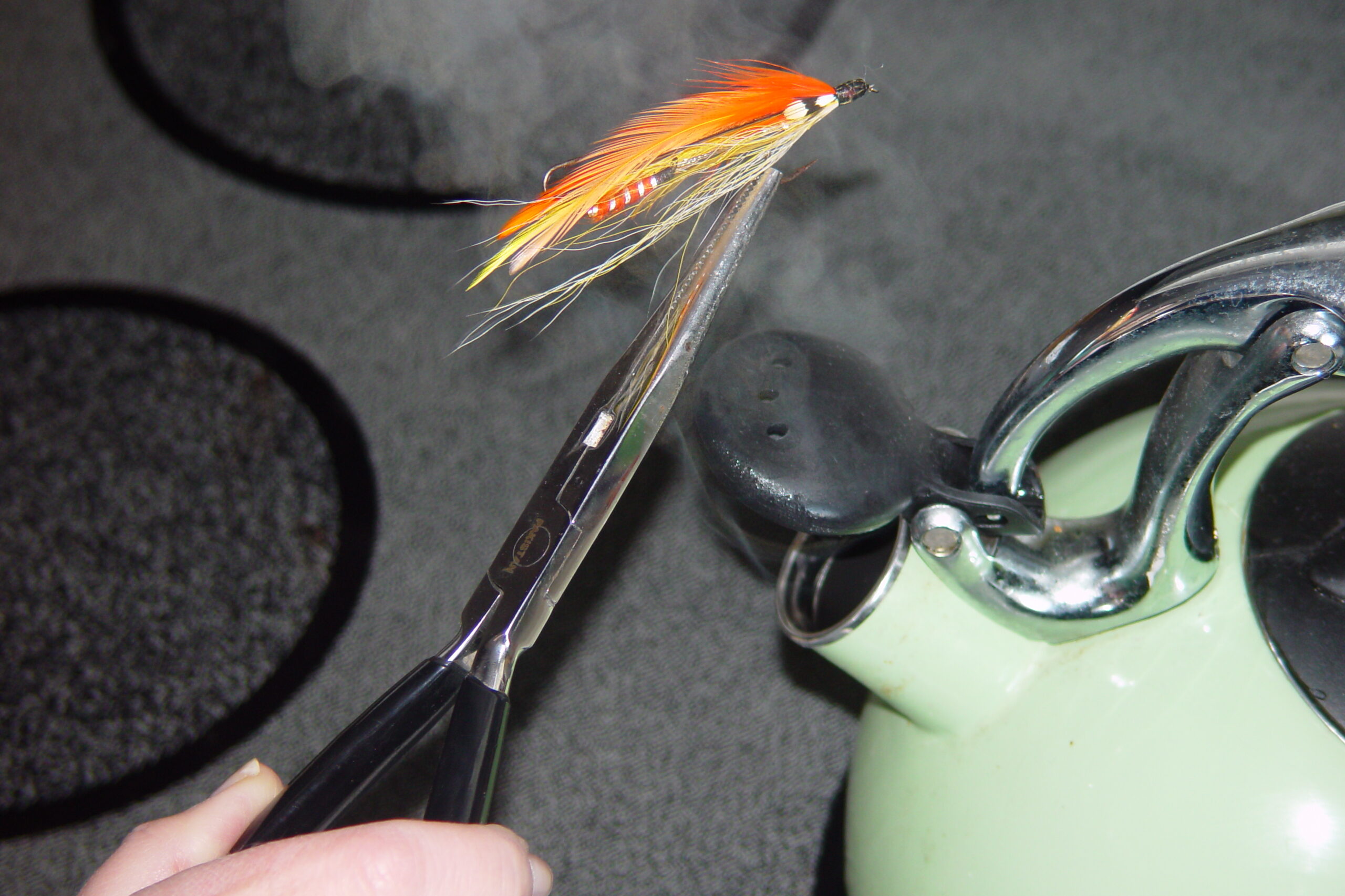
I find this time of year discomforting. Winter in Aroostook County generally begins in November and we still have snow in April. When most Maine folks are working on lawns and gardens, we Crown of Mainers endure mud season.
I’ve had enough ice fishing and my yen for chasing rabbits and calling coyote wanes significantly. Cabin fever has reduced my desire to tie more flies, reload more shells, build rods, carve decoys or even read or watch videos of favorite pastimes. Thankfully, open water fishing season is slowly but surely approaching, and preparing, refurbishing and refining my stockpile of equipment is what helps me survive the depressing Ides of March.
Like myself, many fishermen get antsy this time of year, and working with their rods, reels and tackle boxes seems to calm and comfort anglers. Opening one of my fly boxes and perusing the multi-sized and colored patterns is almost like reading a good book; it promotes a warm, comfortable feeling.
Unless a hook is broken, I seldom throw a fly away. I’ve got some patterns so old and beat up they resemble something a cat would cough up. But I’ve seen times when trout were striking some God-awful creations, so better safe than sorry.

I do remove abused, matted patterns and attempt to restore some form and color by steaming them clean. A pot of boiling water will do, but a tea kettle issuing a narrow spout of steam is even better. Secure the fly by the hook bend with a pair of long-nosed pliers or a hemostat, then move the fly through the steam at various angles. Make sure all portions are penetrated by cleaning for at least 30 seconds for dry and wet flies, 45 for streamers and salmon flies and a full minute for tandem flies and large saltwater flies.
Once steamed, lay the fly on a paper towel and gently pat with a Kleenex. Once you have several flies done, use a hair dryer on low setting and a toothpick to fluff and dry the material, then hang the flies overnight on a thread tied between two cabinet handles. Make sure everyone in the house is warned about the drying line or some very ugly situations can occur. It’s amazing how a bit of steam cleaning can restore flies.
Spending some time at the fly tying vise is the next step. Tie replacements for any patterns broken or lost, as well as a few extras of the flies that produced well last summer. Add a few new patterns you read about or heard about. Repair any flies that need help. If a head is coming apart, recement it. If a tail or hackle was torn lose by an aggressive fish, it’s often a minor repair job to make the fly whole again.
If a fly sustains major damage to the body, ribbing or wings, it’s often necessary to partially or sometimes fully dismantle the fly and replace portions. Use a small flat file to sharpen the point and each edge of the barb of any fly used last season. Nicking a rock, catching a fly in a tree branch or even hooking a bunch of fish will dull a hook. It’s heartbreaking to loose a big fish, and more often than not a dull point or bent barb is the culprit.

Once the flies are refurbished, repaired and replaced, it’s time to go over the lures and plugs. Treble hooks only hold better if they are each sharpened. Make sure the small screw-in eye holding every treble hook to a plug is well seated. If there’s any looseness, unscrew the eye, place a drop of super glue to the threads and reinsert.
On lures that use metal split rings to secure treble hooks, inspect the rings for integrity, using a set of needle noose pliers. Sometimes anglers exert a lot of pressure when a lure gets hung up, and a ring may need to be closed tight. If a small spot of rust appears on the hooks or metal body of a lure, use steel wool to clean the spot and brush on clear nail polish to prevent further corrosion.
On plugs or lures that have propellers, hinged bodies or other moving parts, a drop of light oil or a well directed spray of WD40 or silicone spray will aid mobility. Make sure you have plenty of split rings, snap swivels and barrel swivels in your tackle box as well as tools for lure repair on the water.
It’s also a good time to replace old fly boxes or lure containers. I use see-through, multi compartment plastic cases for storing my plugs and lures so I can see what I want without searching, and plastic is easier on the finish of each lure. I use fly boxes with closed cell foam to hold each fly rather than metal clips or springs. Now is a good time to change one or two boxes.
I also practice my knots. Sometimes a situation calls for a more complicated knot for a plug or for a dropper fly set up. I refresh my memory using a piece of string while I watch TV in the evening. I even go over a few nautical knots for use with my boat or canoe. It’s good to be able to tie a knot almost by feel since a lot of fishing and boating is in the dim light of dusk and dawn.
Despite the mild winter conditions, it’s always a mystery when anglers will be able to hit the waterways in their area. Take some time and go over your tackle box. Even if your gear is in good shape you’ll probably enjoy a few great memories from last year’s outings.







